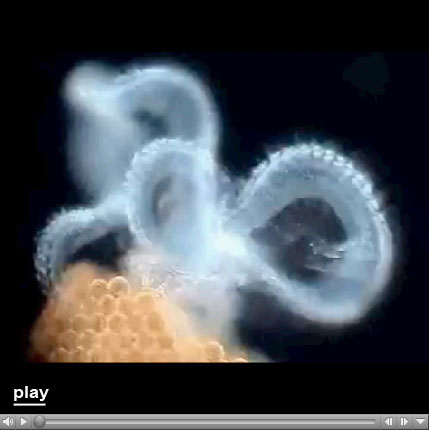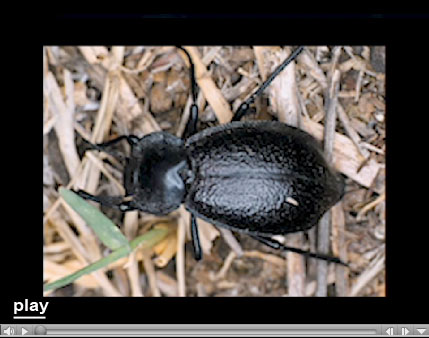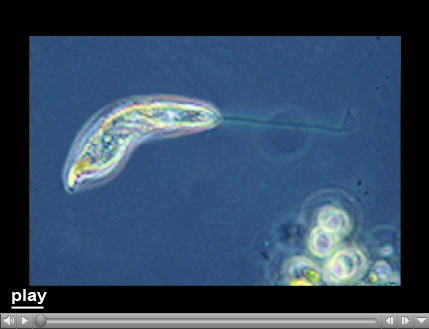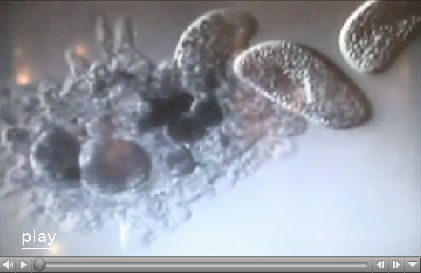A Novel Challenge for Enthusiast Microscopists
'The Sound of Life?'
by Mol Smith
I remember as a boy reading the Professor Challenger stories written by Sir Arthur Conan Doyle. Yup, the same guy who wrote the Sherlock Holmes stories. One of the tales, titled 'When the World Screamed ', was first published in Liberty magazine, 25 February – 3 March 1928. (I'm not that old btw). The professor and his team drill into the earth until he reaches the mantle, convinced that it is a sentient being, akin to an echinus, and that by doing so he will be the first person to alert it to mankind's
presence. He awakens the giant creature, which then proceeds to destroy his excavation, covering the spectators with a noxious liquid in the process. Gaia Theory exaggerated?
What stuck in my mind was the idea that our Earth could make a sound. I mean what would the sound of the earth rushing through space at 3 miles a second actually sound like? Or, if you could hear the oceans being dragged, pushed and pulled by the Moon's gravity and smashing against all those shorelines, what would that sound like? Of course, as space is a vacuum, no sound is heard... or is that wrong. With our current technology, do we need air to understand audible interpretations of forms like planets
and suns?
|
The answer is no, we don't. For example, here is a sample of the world screaming. Click on the image right. |
The problems with recording sound, especially from such tiny microscopic organisms or macro-sized life forms , make it technically near impossible using conventional microphones and audio recording techniques. It is a similar problem to that of recording the earth screaming.
But it's not impossible!
The minute changes in the intensity of light from an LED source below a slide containing a live rotifer - cilia in full motion - could be easily monitored with a light sensor and transcoded into a sound wave file with components purchased from somewhere like Maplin, say, for just a few dollars. I am surprised that microscopy enthusiasts, students, and other naturally curious and intelligent folk haven't done something along these lines already.
| The Sound of Life - Rotifer So, just to get someone out there inspired, might the sound accurately sampled through light and transcoding sound like this in the video on the right? Of course, my audio is not real. It's an effect I created through my imagination. Without measuring the speed of those cilia oscillations, we can not know if my 'rotating' sound is at the correct frequency. My sound was made by taking a helicopter rotor audio and mixing it with water running down a drainpipe. I added some echo and flanging to liven it up and to disguise the helicopter prevalent noise. The challenge here is can you record a real sound from a rotifer? And if you do and write an article on how you did it, we'll show it to over a million people when you send the sound and the article to us so we can publish your genius. |
|
But let's not stop there.
| The Sound of Life - Beetle I would love to hear the sound of a beetle's wing covers sliding back and it's wings unfolding. Is this possible by placing a large beetle into a box prepared to suppress external noise , or possibly by filtering out from the recorded audio any sounds not within the frequency range of the action? A hard challenge. The challenge here is can you record real sound of a beetle preparing for flight? And if you do and write an article on how you did it, we'll show it to over a million people when you send the sound and the article to us so we can publish your genius. To become inspired, play the video on the right! |
|
| The Sound of Life - Flagellate There are so many sounds we have never heard: the gnashing, 'bone-crunching' jaws of a rotifer, the pad, pad, pad of a housefly scampering over a wooden kitchen table, the unsheathing of a wasp sting (would it sound like a rapier drawn from its sheath?). To inspire you, maybe, play the video on the right! Then consider the twanging vibration of a spider's web as a fly, caught there, struggles as the spider comes for lunch; or what about a pond skater gliding in short sudden movements on the surface of a pond. I can think of loads: a moth emerging from its chrysalis, the air rushing in and out of water fly larva breathing tubes, the scribbling, scratching, and scrambling fervour of a disturbed ant's nest, or what about the dark sound of a mosquito sucking blood? |
|
| The Sound of Life - Drama If you look at videos of microscopic subjects made by us enthusiasts, three trends exist. The first is the microscopist talks over the video to explain the content. (Good!). The second is the person puts some really inappropriate music to it. And the first is nothing. This is not really going to engage people in a science study area we love. So, a smaller challenge is this - if you make a video with a macro view or microscopic view, why not also take the time to produce appropriate sound effects. It's not rocket science. Take a look at the youtube video to the right, which I downloaded and put audio effects to. The content is an amoeba trapping and 'eating' two Paramecium. This is drama now because of the sound of life I added to it. I feel the microscopists out there... you... are passionate about your studies. If you make videos, adding a little drama through good sound effects can greatly improve interest by others in your work. |
|
But my main point is not the drama of adding sound effects, it is the idea of recording an interpretation of the real sound of tiny living forms through using a clever mind and possibly applying light, lasers, electronics, computers, optics, and intelligence to probe and explore that intent. We study life which is difficult or impossible to see with the naked eye. When do we begin to study life this small, which is difficult and impossible to hear with the naked ear?
I challenge you to achieve it.
The future of recording sounds smaller than the human ear can detect may already being made possible according to this.
If you do record sound of micro or micro life forms, please contact me here and tell me about it. molsmith
mol




